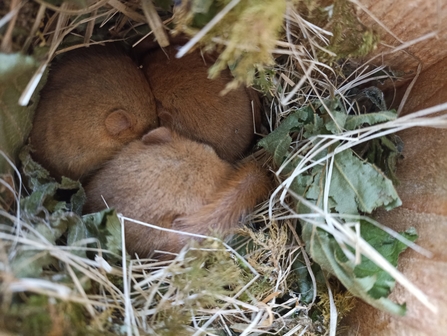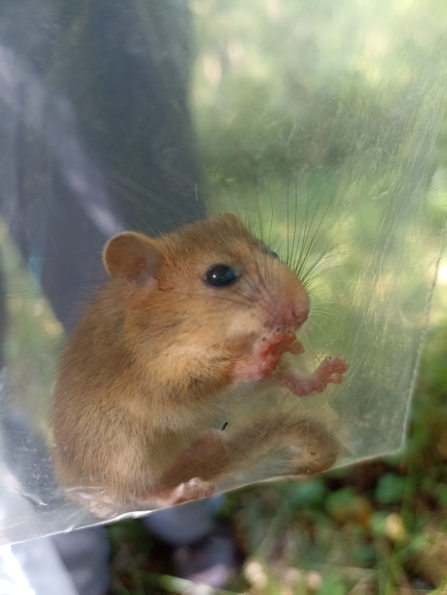4 minute read
Or, you can listen to the full conversation on The Wild Cornwall Podcast, Spotify, or Apple Podcasts
Danny Green
4 minute read
Or, you can listen to the full conversation on The Wild Cornwall Podcast, Spotify, or Apple Podcasts
Well, they are ridiculously cute, charismatic creatures. (Though as an ecologist, I’m not really supposed to say how cute they are!) For those who don't know anything about them, they are small mammals with lovely fluffy tails.
They can be really important indicator species for healthy habitats. In a woodland environment, if you've got dormice, it can tell you that you've also got other nice wildlife, too – and hopefully it's thriving.

Hazel dormice in box. Image by Laura Snell
Definitely. They are fully protected under UK wildlife legislation. They're also on the UK Mammal Red List. They're listed as vulnerable on that list, which means they're at risk of extinction in the wild.
What's really concerning is that in the last review of their conservation status, we think that they've declined nationally by about 70%since 2000. So there’s definitely a cause for concern. You can read the full State of Britain's Dormice 2023 report here.
There is definitely hope for dormice mid-Cornwall, though records tend to be sparse further west in the county. Mid-Cornwall, which includes our Helman Tor nature reserve, is actually a stronghold for them and they seem to be doing reasonably well. We've got a lot of woodland and scrub habitat in this area that they that they thrive in.
Laura Snell checking dormouse boxes at Helman Tor
So on our Helman Tor reserve, we have box schemes in place, both on the Red Moor and Breney areas of the reserve. We put up boxes, which look a little bit like a bird boxes, onto a tree. They have holes in the back. Basically, they mimic a cavity or a hole in a tree.
The dormice use these: they will go in and will nest in them. We check these boxes monthly for the presence of dormice to see if they're breeding during the active season (between April and October).
It’s really important if people see these boxes that they don’t touch them or open them up. Dormice are legally protected. You need to be with a licensed surveyor if you’re monitoring them.
Unlike a lot of other small mammals, they hibernate. They go on to the ground and build a nest. Moving to the ground in winter gives them more stable temperatures for when they're asleep. They'll stay in hibernation until about April or May (depending on the weather) when they come out of hibernation. Then they leave the ground because they prefer to be arboreal (tree dwelling) and they need connected understory and scrub to move around, feed and nest.
It’s a delicate balance on this site because we've got open habitats, scrub habitat and woodland habitats where the dormice reside – and we need to cater for them all. But the rewilding plans, especially on the Creney farm site, will no doubt create networks of scrub and well managed hedgerows that the dormice will really benefit from. So hopefully we’ll provide better connectivity for them into the Creney Farm site and into the wider landscape…
They can donate to our Rewilding Helman Tor Appeal – the reserve managers are working hard on that site. In the woodland there they've done coppicing, which is really beneficial for dormice because it rejuvenates the understory, creating that dense structure that they really love and need to move around.

Hazel dormouse. Image by Laura Snell
Or people can volunteer! Last year we had volunteers helping us put up over 150 new dormouse boxes, which is amazing. I train up volunteers for their dormouse license and we also bring people on checks as well if they ever want to see a dormouse.
I never get tired of doing dormouse surveys! It's like hunting for treasure. When you open the box and see the hint of a nest, there's nothing like it. And if you if you see movement, there are squeals of excitement,
Of course, we then weigh them and sex them – and that all feeds into the national dormouse monitoring program, which looks at dormouse trends nationally. So we're helping with the bigger picture, whilst also helping at the local scale helping to inform reserve management.